NEWS, EVENTS & BLOG
BLOG
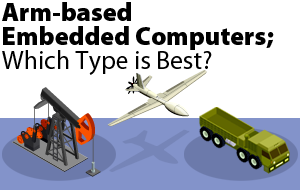
Arm-based Embedded Computers: Which Type is Best?
Press Office, VersaLogic Corporation, 02/17/21
Half a Computer
Arm processors are well known for their low power draw and low cost. They are very effective in lower-performance applications. But what do you get when you buy a “board” with an Arm processor on it? Sometimes it’s only half of what you need. Should you buy a module or an SBC? We’ll look at the differences.
A Processor or a Computer
While Arm processors are great for some applications, and more powerful x86 processors are great for others, neither of them can function on their own. The processor chip must be designed into a board that allows them to operate. They must have just the right voltage input, be able to connect with memory and data storage devices, interface with communication devices like Ethernet and USB, etc.
Whether based on Arm®, or on x86 technology, processors are sold in two basic configurations.
- System On Module (SOM)
- Single Board Computer (SBC)
Arm processors are most frequently sold on a module (SOM). x86 processors are usually sold as part of a full computer (SBC). Regardless of why this evolved, we need to be aware of the plusses and minuses of each approach.
System on Module (SOM)
A SOM, or “module”, connects a processor chip with many of the basic support circuits that it needs to run. It usually includes on-board memory and some limited I/O interface circuity. It provides the foundation of an operating computer, but it will not operate without additional circuitry. A SOM doesn’t include any “real world” connectors that are needed to plug in power, USB, Ethernet, etc. In order to use a SOM, a carrier board must be purchased or designed to make the connections to the outside world.
SOMs are great for someone that has design expertise. They have all of the difficult high-speed circuity done, making the additional carrier board much easier to design. SOMs are meant to act as only a part of an embedded computer. A SOM provides a convenient head-start for someone designing their own system, but they are not “production-ready”.
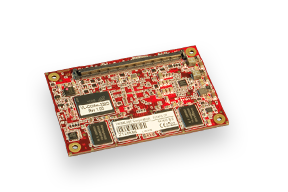 A typical SOM showing the high-density connector (near the top edge) that interfaces with a carrier board.
A typical SOM showing the high-density connector (near the top edge) that interfaces with a carrier board.
SOMs came about primarily to limit cost. This fits very well with Arm processors that are low-cost to begin with. Arm-based SOMs are very low cost, and often look like they have all the functionality of a complete embedded computer. Unfortunately, they don’t.
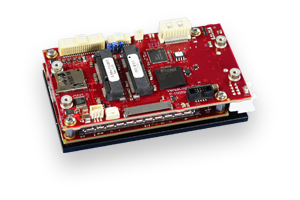 Example of a board set. The connected carrier board is on the top, and the system on module is underneath.
Example of a board set. The connected carrier board is on the top, and the system on module is underneath.
Single Board Computer (SBC)
In contrast to a SOM, an SBC (Single Board Computer) is a fully functional board-level computer. SBCs do not require additional carrier cards, companion boards, connector break-out boards, or other add-ons in order to function. They are ready to turn on and run application software.
Although SBCs are quite common in the x86 world, they have traditionally been less available in Arm-based products. Fortunately, this is changing. As Arm processors become more powerful, and users understand the cost and development overhead needed to use SOMs, the availability of Arm-based SBCs is on the rise.
An example is the Zebra SBC from VersaLogic which is based on the i.MX6 quad core processor. As you can see in the photo below, it includes all of the connectors need to plug in and run the board. It can be directly installed in a system without purchasing, assembling, or testing two different boards. It is truly production-ready.
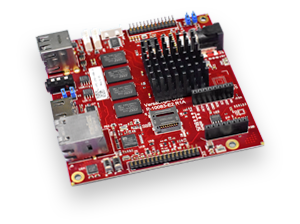 VersaLogic’s “Zebra” SBC is a smaller-size SBC (95 x 95 mm) and includes industry standard I/O ports.
VersaLogic’s “Zebra” SBC is a smaller-size SBC (95 x 95 mm) and includes industry standard I/O ports.
Applications Are Changing, Too
As Arm processors become more powerful, applications for Arm-based single board computers are changing as well. Boards like the Zebra and the larger Tetra board have been designed from the ground up for challenging embedded applications. They meet the demanding requirements of industrial, medical, and mil/aero applications including extended temperature operation (-40° to +85°C) and MIL-STD shock and vibration standards.
Even in less demanding applications, such as parking garage sensors or smart meters, there is a need to operate over a wide temperature range, especially inside a sealed box. As the “smart city” concept grows, applications for this type of solution will increasingly require these types of cost effective, rugged, single board computers to provide computing power where it is needed.
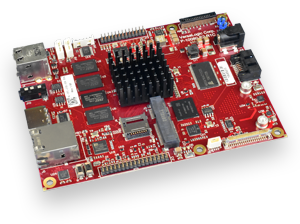 “Tetra” quad-core Arm-based SBC.
“Tetra” quad-core Arm-based SBC.
To round out the VersaLogic Arm-based SBC portfolio, the Swordtail offers wireless I/O options. The addition of Bluetooth, cellular and Wi-Fi capabilities enhances flexibility for end-use application developers.
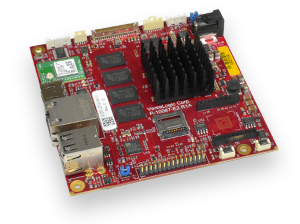 The “Swordtail” SBC offers wireless capability in addition to standard I/O ports.
The “Swordtail” SBC offers wireless capability in addition to standard I/O ports.
Single Board Computers Save Time, Have Longer Lifecycles
In summary, users have access to Arm computing capability with system on module or single board computer offerings. The SBC route provides an immediate off-the-shelf production-ready option that simplifies both development and production time and logistics.
For OEMs, this cuts six to twelve months from the product design schedule versus having to design custom I/O and expansion solutions around SOMs. SBCs allow the design team to focus on development of the application rather than the computer board.
The availability of extreme temperature and rugged Arm-based SBCs expands their applicability and, when coupled with long product lifecycles, makes them an attractive solution for longer lifetime programs in defense, aerospace, industrial, and smart city infrastructure applications. For a deeper look at the subject of Arm embedded computing, download VersaLogic’s white paper on the topic below.
Arm is a registered trademark of Arm Limited (or its subsidiaries) in the US and/or elsewhere.
Need additional Information?
Want to know more about VersaLogic’s range of Arm-based embedded solutions? Let’s start a conversation. Contact a VersaLogic technical expert today.
